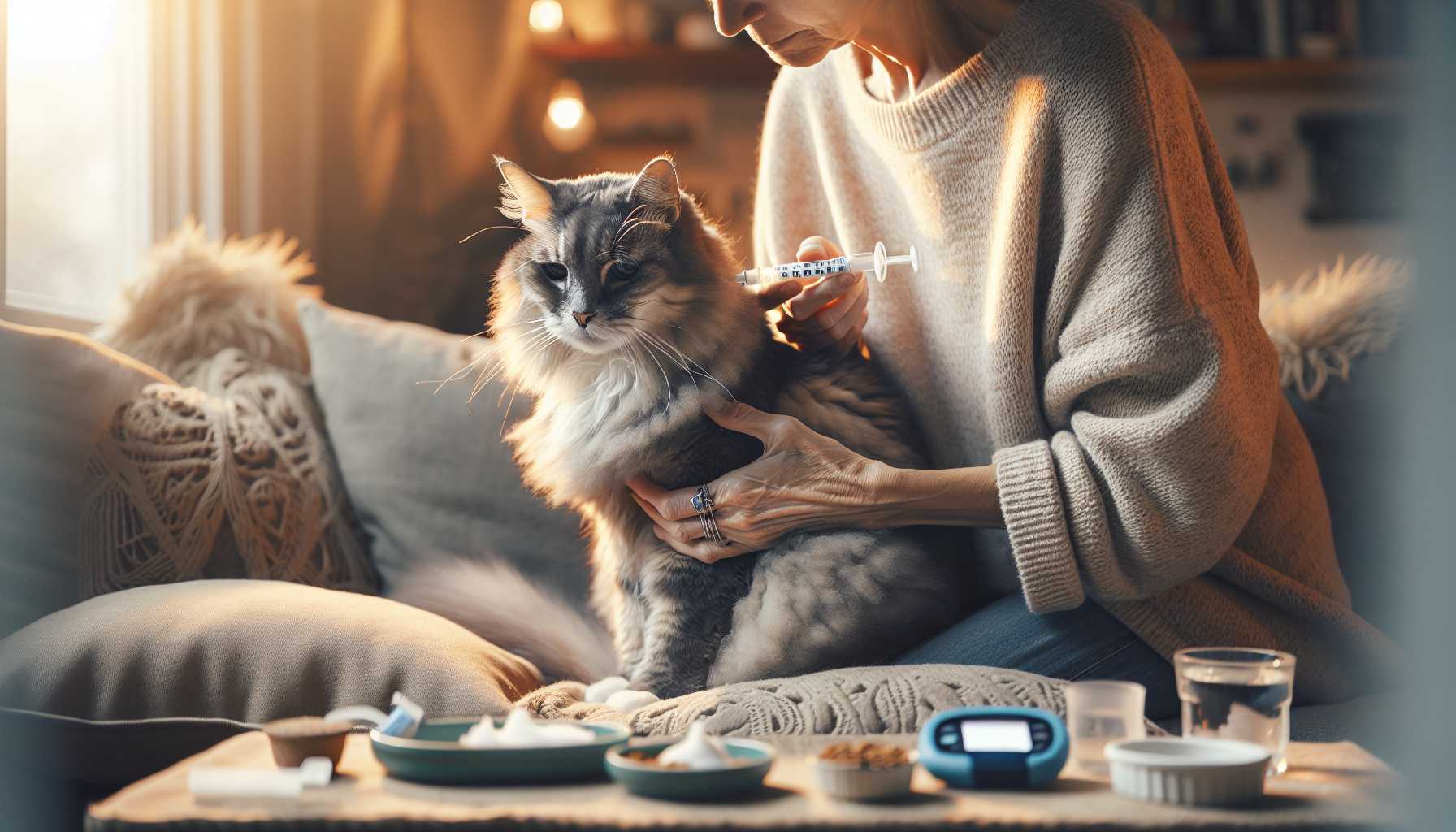Managing Diabetes in Senior Cats: Complete Care Protocol

Comprehensive Guide to Caring for Elderly Cats with Diabetes
Do you have an older feline friend diagnosed with diabetes? You don't have to navigate this seemingly tough path alone. We've put together all the vital information you need for managing your senior cat's diabetes with empathy and assurance.
Interpreting Feline Diabetes in Senior Cats
As cats age, they might start to experience a common ailment of humans - diabetes. This happens when their bodies fail to regulate glucose levels correctly. Rest assured, though, that meticulous care and attention can offer your senior cat a fulfilling and comfortable existence.
Essential Signs and Symptoms to Look Out For
- Drinking more water than they typically would
- More frequent urination
- Increased food intake but consistent weight loss
- Persistent fatigue and weakness
- Coat appears ragged and uncared for
If you observe these signs in your older cat, it's advisable to arrange a swift visit to the vet.
Crafting the Ideal Dietary Regime
Tailoring a diet that caters to the needs of your senior diabetic cat is crucial. Here are some beneficial tips:
- Opt for high-protein, low-carb foods
- Maintain consistent feeding times
- Always provide fresh water
- Limit treat intake
- Choose wet food for improved hydration
Keeping Insulin Administration Simple
Administering insulin injections is not as daunting as it may seem. Here are ways to make the process less stressful :
- Create a tranquil environment
- Reward positive behavior
- Stick to a regular schedule
- Keep a record of each administration
- Ensure insulin is stored correctly
Exercise and Weight Supervision
Even elder cats require physical activity! Here are some gentle ways to encourage movement:
- Engage using interactive toys
- Organise brief playtimes
- Invest in cat trees for fun climbing
- Employ laser pointer games
- Regularly monitor their weight
Scheduled Monitoring and Vet Appointments
Ensure optimal health of your cat by:
- Checking blood glucose levels regularly
- Scheduling monthly vet visits
- Monitoring their water consumption
- Keeping an eye on the litter box habits
- Recording any changes in behavior
Ensuring a Comfortable Environment
You can create a conducive living condition for your elderly diabetic cat by:
- Providing easy access to necessities
- Offering unpressurised feeding zones
- Assuring comfortable resting places
- Maintaining cleanliness of litter boxes
- Designing quiet, stress-free spaces
Being Prepared for Emergencies
Know how to respond in situations like:
- Episodes of low blood glucose
- Marked increase in thirst
- Sudden loss of appetite
- Unusual acting out
- Instances of weakness or collapsing
Bearing in Mind Quality of Life Factors
Key points to remember include:
- Uphold routines
- Shower them with extra love and care
- Maintain a balanced environment
- Check comfort levels consistently
- Applaud minor wins
Collaborating with Your Veterinary Team
Form a productive relationship with your vet by:
- Showing up for all appointments
- Asking relevant questions
- Relaying your observations
- Strictly following recommended care plans
- Keeping yourself educated about the ailment
Coping with the Emotional Journey
Managing your elderly cat's diabetes is a labor of love. Maintain a positive attitude, exercise patience, and treasure each tiny progress. Your consistent care substantially impacts your beloved pet's well-being.
Assure yourself that you're doing remarkably well in looking after your treasured senior cat. With persistent love, care, and commitment, your diabetic companion can continue to amuse, entertain, and enrich your life in many more years to come.
Need more support? Connect with local pet parent groups or virtual communities to exchange experiences with others embarking on the same journey. You're never alone when it comes to caring for your diabetic senior cat!